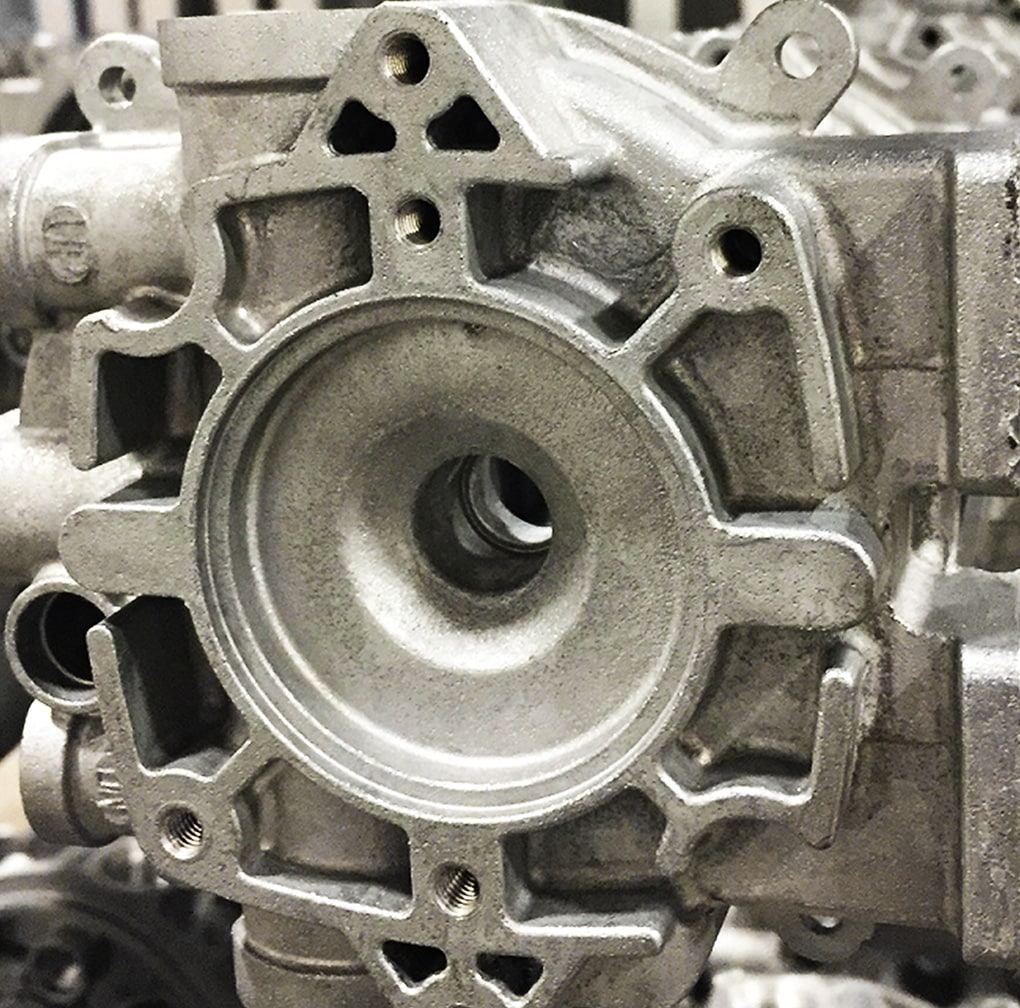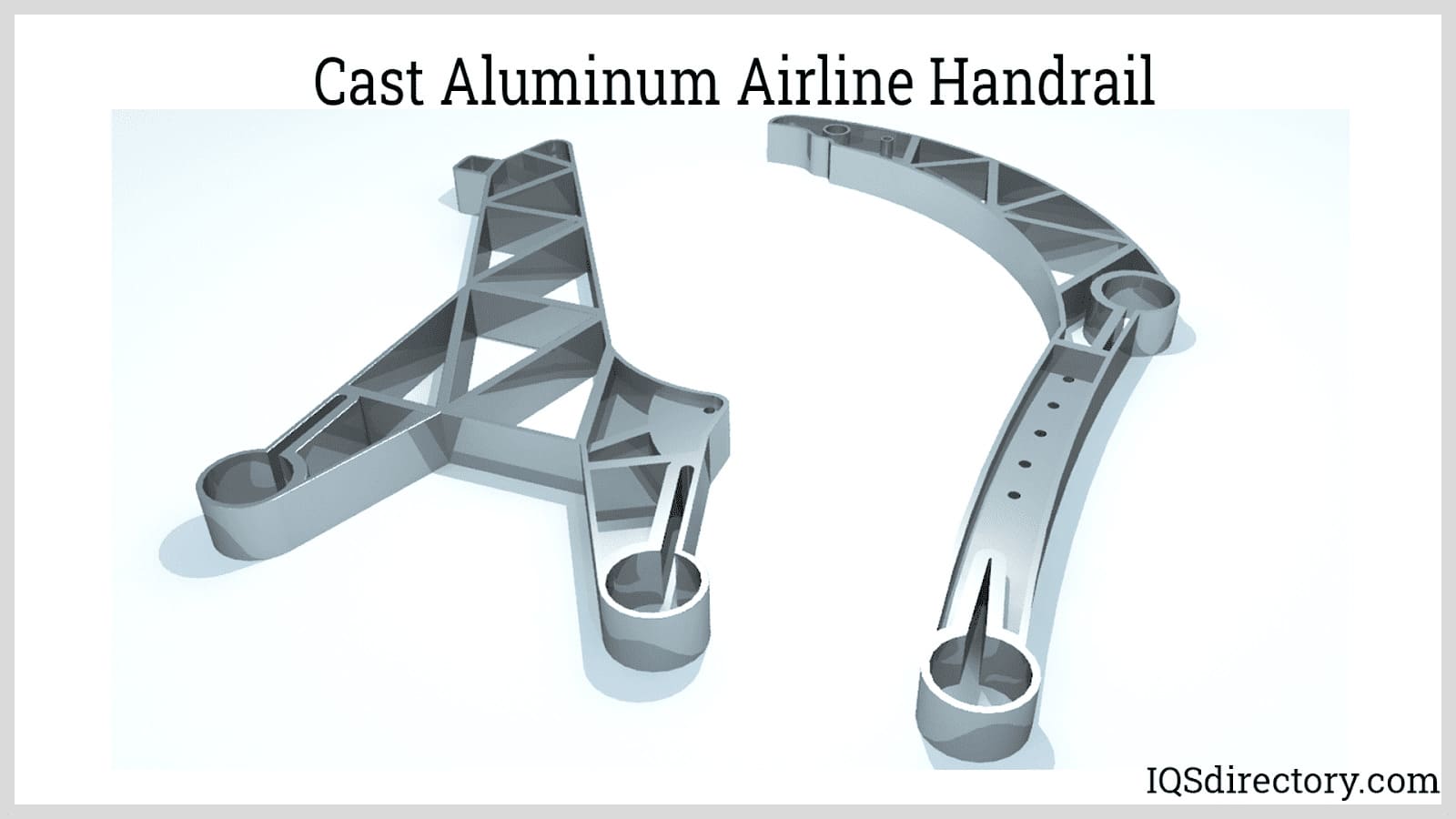Exploring the Versatile Utilizes and Applications of Aluminum Castings in Modern Industries
Aluminum castings have actually become integral to different modern sectors because of their distinct homes. They supply substantial advantages in weight reduction, thermal conductivity, and deterioration resistance. From auto developments to applications in consumer goods and construction, their adaptability is exceptional. Yet, truth degree of their effect expands past prompt benefits, meaning more comprehensive ramifications for sustainability and performance. What exists in advance for aluminum spreadings in an ever-evolving commercial landscape?
Automotive Industry Innovations
The vehicle market has actually significantly embraced light weight aluminum castings to enhance car efficiency and effectiveness. By utilizing aluminum, makers can generate lighter components, which contribute to improved fuel economic climate and decreased emissions. Key applications include engine blocks, transmission instances, and structural components, where the product's strength-to-weight ratio supplies durability without adding excess weight.
Aluminum castings likewise use superior thermal conductivity, which assists in much better warm dissipation, thus improving engine efficiency. Additionally, developments in casting innovations, such as die spreading and sand casting, allow the production of complicated geometries, enabling ingenious designs that enhance room and performance.
The recyclability of light weight aluminum aligns with sustainability objectives in the automobile field, promoting eco-friendly practices. As the sector remains to innovate, making use of light weight aluminum spreadings is likely to expand, driving additional innovations in vehicle style and performance.
Aerospace Applications and Developments
While the aerospace sector remains to focus on weight decrease and fuel effectiveness, aluminum spreadings have actually become an important product option for various applications. Their lightweight nature, paired with high strength-to-weight proportions, allows for considerable enhancements in aircraft performance and efficiency. Aluminum spreadings are typically utilized in structural elements, such as body frames and wing components, where reducing weight is essential.
Current innovations in light weight aluminum spreading modern technologies, including improved alloy solutions and precision casting strategies, have actually better improved the product's efficiency capabilities. These technologies allow the production of complicated geometries and elaborate designs while maintaining structural integrity. Furthermore, aluminum's superb corrosion resistance assurances durability and reliability in severe aerospace atmospheres.
As the aerospace sector increasingly embraces sustainability, aluminum spreadings offer a recyclable option that straightens with environment-friendly practices, making them a pivotal element in the development of next-generation airplane.
Durable Goods and Everyday Products
As customers increasingly look for lightweight yet durable products for daily items, aluminum castings have gained appeal in different customer products. The unique residential properties of aluminum, including its resistance to deterioration and superb thermal conductivity, make it an ideal choice for items like cookware, house appliances, and exterior equipment. Aluminum cast frying pans and pots supply even warm circulation, boosting cooking performance. In addition, making use of light weight aluminum in items such as bicycle structures and travel luggage assures a balance in between strength and transportability. Manufacturers value light weight aluminum castings for their convenience, as they can be quickly formed right into complicated forms while preserving architectural honesty. Furthermore, the ability to reuse light weight aluminum without deteriorating its homes aligns with expanding consumer preferences for lasting items. Overall, aluminum castings are essential to the production of long lasting, useful, and visually pleasing customer products, meeting the demands of modern-day way of livings.
Building And Construction and Architectural Uses
Light weight aluminum spreadings have actually ended up being an essential part in construction and building style, specifically as a result of their stamina and lightweight nature. These properties make aluminum a perfect choice for various applications, including architectural aspects, exteriors, and decorative features - Aluminum Foundry. Architects and contractors significantly use light weight aluminum castings for home window structures, doors, and roof, improving both performance and looks. The product's resistance to rust further prolongs its life-span, lowering upkeep prices and guaranteeing longevity in varied environmental conditions
Additionally, light weight aluminum can be quickly formed into elaborate styles, permitting innovative building expressions. Its flexibility promotes the production of customized items that meet specific style needs, from elaborate railings to intricate supports. As sustainability ends up being a concern, aluminum's recyclability includes to its appeal in environment-friendly building methods. In general, light weight aluminum castings are reinventing the building industry by giving light-weight, long lasting, and visually enticing services.
Digital and electrical Components
Aluminum spreadings play a crucial duty in the production of lightweight electric enclosures, which enhance portability and efficiency in numerous applications. On top of that, their superb thermal conductivity makes them ideal for warmth sinks, ensuring peak efficiency and long life of electronic components. Additionally, light weight aluminum's conductive residential or commercial properties contribute to its use in different electric conductors, stressing its importance in contemporary innovation.
Lightweight Electric Rooms
Light-weight electrical rooms play an essential duty in securing sensitive electronic elements from ecological factors and physical damage. Constructed from light weight aluminum castings, visit site these units are valued for their strength-to-weight ratio, making them suitable for different applications throughout markets. Their lightweight nature aids in minimizing general system weight, which is vital in mobile and portable electronics. Additionally, light weight aluminum's deterioration resistance boosts toughness, expanding the life-span of the encased elements. The capacity to mold and mildew light weight aluminum right into intricate forms permits personalized styles, accommodating details requirements while guaranteeing effective heat dissipation. In addition, these units can be easily integrated into existing systems, giving versatility and versatility in modern-day technological atmospheres. In general, light-weight light weight aluminum rooms considerably add to the efficiency of electronic devices.
Warmth Sinks and Conductors
While several products are utilized in digital components, light weight aluminum spreadings stick out for their efficiency in warmth monitoring as warmth sinks and conductors. Their superb thermal conductivity allows for reliable heat dissipation, which is crucial in protecting against the getting too hot of electronic devices. Aluminum's light-weight nature even more improves its viability for applications where weight is a significant factor, such as in aerospace and vehicle markets. Furthermore, light weight aluminum castings can be easily formed into complicated shapes, giving layout versatility for maximizing thermal efficiency. The deterioration resistance of aluminum additionally adds to the longevity and dependability of these elements in numerous environments. As innovation breakthroughs and gadgets come to be more small, the need for reliable warmth monitoring solutions, like aluminum castings, proceeds to expand.
Marine Industry Usage
The aquatic market increasingly depends on aluminum spreadings for their outstanding resilience and rust resistance. These homes make aluminum a perfect choice for various applications, including watercraft hulls, engine components, and try these out aquatic hardware. The light-weight nature of light weight aluminum spreadings allows improved gas efficiency and easier ability to move in watercraft, which is necessary for both industrial and entertainment vessels.

Light weight aluminum spreadings likewise supply considerable cost benefits due to their lengthy life expectancy and low upkeep needs, decreasing the general operational costs for marine operators. Additionally, the adaptability of aluminum permits detailed styles that can fulfill certain performance needs.
Makers in the aquatic industry make use of sophisticated casting methods to generate intricate forms, making certain that elements satisfy strenuous security and performance standards. As the demand for high-performance marine vessels grows, aluminum spreadings are positioned as a vital product in enhancing the functionality and long life of aquatic equipment.
Sustainability and Recycling in Aluminum Spreading

Aluminum Recycling Refine
Recycling aluminum plays an important role in lessening environmental effect and preserving sources within the casting industry. The light weight aluminum reusing procedure begins with the collection of scrap aluminum, which can consist of old components, producing waste, and post-consumer items. This scrap is then arranged, cleansed, and shredded right into little items to promote melting.
As soon as prepared, the light weight aluminum scrap is thawed in a heating system at lower temperature levels than key light weight aluminum manufacturing, greatly reducing power consumption. The liquified light weight aluminum is after that cast right into ingots or other shapes for reuse in different applications - Aluminum Foundry. This closed-loop system permits the efficient recuperation of aluminum, preserving its residential or commercial properties while decreasing the need for virgin materials. The reusing process is a critical element of lasting methods in light weight aluminum spreading.
Environmental Benefits
While aluminum spreading plays an essential duty in different sectors, its ecological benefits are especially exceptional regarding sustainability and resource preservation. The light-weight nature of aluminum contributes to energy effectiveness in transportation, minimizing fuel usage and emissions. Furthermore, light weight aluminum spreading promotes making use of recycled products, greatly lowering the energy required for manufacturing contrasted to primary light weight aluminum. This reusing process reduces waste and minimizes the environmental impact connected with mining and refining basic materials. Moreover, light weight aluminum is 100% recyclable without deterioration of its buildings, advertising a sustainable lifecycle. By picking aluminum casting, industries can significantly reduce their carbon footprint while promoting resource effectiveness, making it a vital option in the pursuit of eco friendly manufacturing methods.
Closed-Loop Equipments

Frequently Asked Questions
What Are the Trick Advantages of Aluminum Castings Over Other Products?
Aluminum spreadings provide lightweight properties, excellent rust resistance, and high strength-to-weight ratios. They can be easily formed right into intricate forms, offer excellent thermal and electric conductivity, and are affordable, making them more effective over several alternate products.
Just how Is the Light Weight Aluminum Spreading Refine Environmentally Pleasant?
The light weight aluminum spreading procedure is eco friendly because of its recyclability, low power usage, and minimized waste production. Its ability to use recycled products decreases the carbon footprint, promoting sustainability within manufacturing practices.
What Prevail Obstacles in Aluminum Casting Production?
Usual difficulties in light weight aluminum spreading production consist of preserving dimensional precision, taking care of thermal tightening, avoiding defects like porosity and incorporations, making sure correct mold and mildew style, and optimizing manufacturing performance while decreasing material waste and ecological impact.
Exactly How Do Aluminum Castings Compare in Price With Other Production Techniques?
Aluminum spreadings usually provide competitive costs compared to other manufacturing methods, particularly for tool to high-volume Metal Castings manufacturing. Their reduced preliminary tooling expenditures and reliable product usage can lead to favorable economics with time.
What Future Patterns Are Anticipated in Aluminum Casting Technology?
Future trends in light weight aluminum casting innovation are prepared for to consist of improvements in automation, boosted alloy make-ups, enhanced reusing methods, and the integration of 3D printing, all intended at increasing effectiveness, lowering expenses, and minimizing environmental effect.
Current innovations in light weight aluminum casting modern technologies, including improved alloy formulas and precision casting techniques, have additionally boosted the product's efficiency capacities. Aluminum castings have ended up being an important part in building and construction and building layout, especially due to their strength and light-weight nature. The light weight aluminum reusing procedure starts with the collection of scrap light weight aluminum, which can include old components, manufacturing waste, and post-consumer items. Once prepared, the aluminum scrap is thawed in a heater at reduced temperatures than primary light weight aluminum production, considerably minimizing energy usage. Additionally, light weight aluminum spreading assists in the use of recycled materials, greatly lowering the energy required for production contrasted to key light weight aluminum.